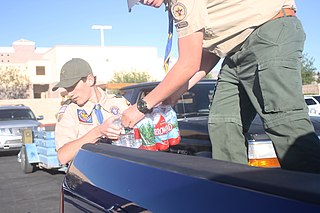
Scouting in Nevada has a long history, from the 1910s to the present day, serving thousands of youth in programs that suit the environment in which they live.

Scouting in Missouri has a long history, from the 1910s to the present day.

Scouting in Mississippi has a long history, from the 1910s to the present day, serving thousands of youth in programs that suit the environment in which they live.

Wisconsin has a long history with the Boy Scout and Girl Scout organizations from the 1910s to the present day, both programs have independently served thousands of youth in programs that suit the environment in which they live.

Scouting in Illinois has served youth since 1909. The state was the home of the Boy Scouts of America (BSA) founder, William D. Boyce.

Scouting in Indiana has a long history, from the 1910s to the present day, serving thousands of youth in programs that suit the environment in which they live.
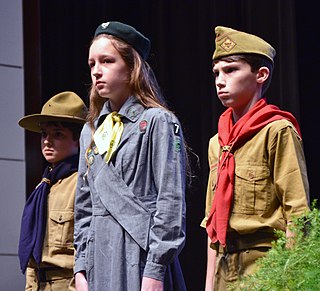
Scouting in Tennessee has a long history, from the 1910s to the present day, serving thousands of youth in programs that suit the environment.

Scouting in North Carolina has a long history, from the 1910s to the present day, serving thousands of youth in programs that suit the environment in which they live.

Scouting in Massachusetts includes both Girl Scout (GSUSA) and Boy Scouts of America (BSA) organizations. Boy Scouts of America was founded in the 1910s in Massachusetts. Girl Scouts USA was founded in 1912, by Juliette Gordon Low. With a vigorous history, both organizations actively serve thousands of youth in programs that suit the environment in which they live.
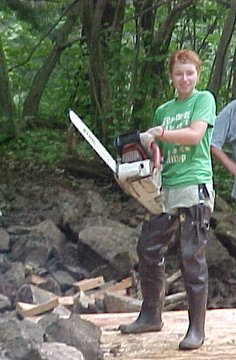
Scouting in Pennsylvania has a long and rich tradition, from 1908 to the present day, serving thousands of youth in programs that suit the environment in which they live.
The Narragansett Council of the Boy Scouts of America serves all of the state of Rhode Island and some of Massachusetts and Connecticut. Its several camps include Camp Yawgoog, Champlin Scout Reservation, and Camp Norse.

Scouting in Rhode Island has a long history, from the 1910s to the present day, serving thousands of youth in programs that suit the environment in which they live.

Housatonic Council is a regional organization of the Boy Scouts of America covering several towns adjoining the Housatonic River in South-Central Connecticut. The council originated from the Derby Council, voting to organize as a first class council at its annual meeting on January 25, 1923. The council had jurisdiction over Scouting in Ansonia, Shelton and Seymour in addition to Derby, with the town of Oxford incorporated into the council at a later date. It has been headquartered in Derby, Connecticut since its founding.
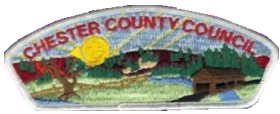
The Chester County Council is a Boy Scouts of America service council that serves members of the Cub Scouts, Scouts BSA, and Venturing programs in Chester County, Pennsylvania and Northeastern Cecil County, Maryland. It is one of the oldest councils in the nation, and is one of two single-county councils left in Pennsylvania, the other being Chief Cornplanter Council in Warren, PA.

Tidewater Council is a local council of the Boy Scouts of America (BSA). It serves the region of southeastern Virginia and north-eastern North Carolina. This region is often referred to as South Hampton Roads or the Tidewater or Tidewater Virginia area; hence the name of the council. Its Order of the Arrow counterpart is the Blue Heron Lodge; which was founded in 1946 when a team from Octoraro Lodge in Pennsylvania inducted the first members of Blue Heron Lodge.
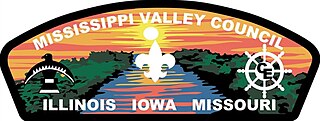
Mississippi Valley Council is headquartered in Quincy, Illinois, and is served by Black Hawk Lodge, Order of the Arrow. This council serves Scouts in Illinois, Missouri and Iowa. The Mississippi Valley Council is one of 14 local Scouting councils in Illinois.

The Winnebago Council is a council of the Boy Scouts of America (#173). The Winnebago Council serves Scouts BSA, Cub Scouts, adult volunteers and Venturers in 17 counties located in North Central Iowa. Including: Black Hawk, Grundy, Butler, Franklin, Wright, Hancock, Winnebago, Worth, Cerro Gordo, Mitchell, Floyd, Bremer, Chickasaw, Howard, Winneshiek, Fayette, and Buchanan.

Water and Woods Field Service Council was a field service council of the Michigan Crossroads Council that served youth in the central and northeastern Lower Peninsula of Michigan. The Council was headquartered in Flint, Michigan, with service centers located in Auburn, Lansing, and Port Huron. The Water and Woods Field Service Council was the result of a merger in 2012 of Lake Huron Area Council, Blue Water Council, Tall Pine Council and Chief Okemos Council.

The Middle Tennessee Council is a local council of the Boy Scouts of America in Tennessee, with headquarters in Nashville. It serves 37 Middle Tennessee counties and Fort Campbell, Kentucky.
Greater Los Angeles Area Council (GLAAC) is a Boy Scouts of America Council created from the merger of the Los Angeles Area Council and the San Gabriel Valley Council. The vote to merge was held on March 21, 2015. The new name for the Council, Greater Los Angeles Area Council, was announced on June 11, 2015. The new Council will continue with Scouting Service centers in Los Angeles and Pasadena. GLAAC has three Scout shops located in Downtown Los Angeles, San Pedro, and Pasadena. Also in Pasadena is a local service center. GLAAC operates seven camps in the greater Los Angeles area. Due to the large size of the two original councils, the merger was a process that was completed over a time span, and completed in 2017.


















